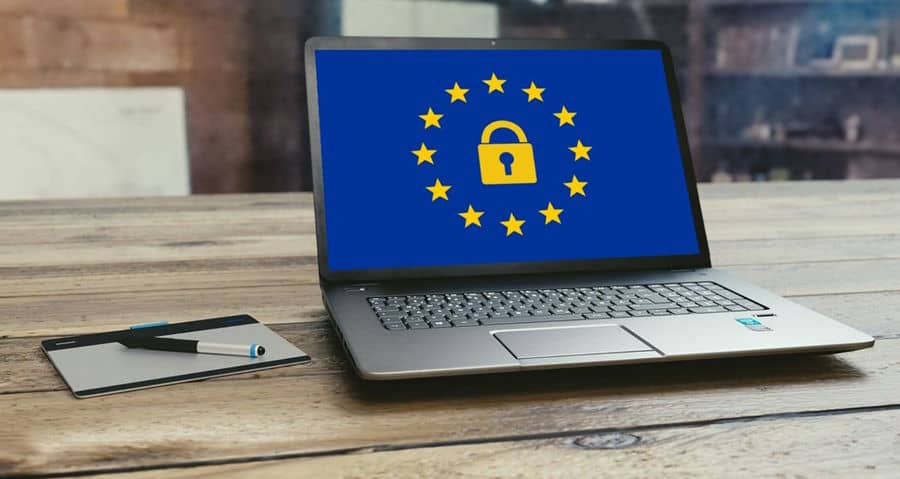The average data breach costs a company up to 4.35 million dollars. The stat speaks volumes on the importance of protecting users' data. While the importance of protecting users' data privacy is not foreign to any business, it is a subject to focus on, primarily if your business deals with citizens of the EU(Europe). Your website must be GDPR compliant if it processes or controls EU citizens' data.
The main intention behind the GDPR act, enacted in May 2018, is to protect people against data breaches. Most sites developed on WordPress or other sites collect user information in varying ways for various purposes. GDPR provides a legal framework that enables businesses to have robust processes to keep their users' data safe.
Whether you own an online business or aspire to build one, this article will help you create a GDPR-friendly website. However, before moving to it, let us understand if or not you should get a GDPR representative for your company.
Get a GDPR representative for your firm
If your business deals with or processes the personal data of individuals in the EU and your business doesn't have a European base, then you need a GDPR representative. A GDPR representative will be the point of contact in case of penalties and fines. They will instantly notify you about every notice from the EU supervisors or the concerned data subjects.
The French data protection authority (the CNIL) hit Google Ireland with a substantial fine of 90 million euros in Jan 2022. Hence it is essential to get a GDPR expert to keep your company safe by reducing the risks of data violations. Even if or when your company gets under the radar of EU supervisors, your GDPR representative will pass the records directly to you.
Get a representative even if you are a small business. Refrain from being under the false notion that the EU data subjects will forgo your company because it is small. However, ensure you choose the right representative. The right GDPR representative will be responsible for the following:
- Determine whether your company process data of EU residents
- Include their contact details in your public privacy notice
- Forward any requests or notice from authorities
- Sign a service agreement confirming the intent of working with an EU-based company
Now that you have a fair idea of how crucial GDPR law compliance is let us quickly move on to tips to create a GDPR-friendly website.
1. Identify whether you are a data collector or a data processor
GDPR differs based on whether a company is a data controller or a data processor. Differentiating between the two is quite simple. A Data Controller will determine the type of information collected and how it will be used. A Data Processor, on the other hand, will process the data given by the Data Controller.
Once you figure out which category you fall under, check the GDPR for the pertaining entity. In whichever case, an individual is allowed to file compensation claims and damages, if any, against both entities.
2. Analyze your company’s current use of users’ data
As stated in point number 1, GDPR implementations are applicable to either a Data collector or a processor. If you are unclear of whether they are applicable to your company or not, consider answering the following questions:
- Do you collect data of users? Is it an EU-based user base?
- What is the reason behind collecting data?
- What are the ways you handle data?
- Do you let your users know about how their data is being used?
- How do you use the data?
- Do you share your users’ data with a third party?
- Is your data collection method safe?
When dealing with data, ensure you also have a list of visitors' cookies collected on your website. Moreover, create a cookie notification on your website that lets users read your privacy policy and can choose to agree with it.
Also, ensure you know how you are communicating with your users about their data. Whether you want to reach out to them via texts, emails, or phone calls. After selecting the mode of communication, let the users know and ask them about the type of information they are willing to receive.
3. Use a GDPR-compliant CMS
WordPress has continued to be the fastest-growing CMS (content management system) for the past 12 years. It offers numerous themes, plugins, and versions, which makes it a preferable choice for building a website. WordPress versions 4.9.6 and higher have inbuilt data privacy settings.
So if your website is built on WordPress, simply upgrading the core software version will make your website GDPR compliant.
Below mentioned are a few ways that WordPress has enabled making websites GDPR-friendly.
Consent in WordPress comments
The platform automatically stored users' names and details in older versions when filling in comments. In the latest version, however, users can manually check the flag if they want the system to store their name so that they don’t have to retype it again while posting another comment.
Export and erase personal data
The platform has added two items under Tools in your dashboard. You can export a user's data into a compressed file or even erase them from your database if they request so. These features help you better manage users' data.
A policy generator
WordPress has also created a privacy policy template. It enables you to create a page informing users about what data you store and how you handle it. You can go to the settings and create a new page to build a privacy policy template.
With these significant updates, the platform makes it easy to take a step towards creating a GDPR-friendly website. If you are yet to start your online business, consider creating your website on WordPress.
4. Give rights to users whose data you collect
As per the GDPR’s regulations, you must provide users full access to your data. They have the right to ask you to erase data or ask you to give them a copy of their data. Ensure your website has a proper process that enables them to have a copy of their data. This allows for full transparency to your users.
Moreover, you also need to ensure whenever your website asks for data from a user, it should ask for their consent. Allow your users to opt0n and select how they want the data to be used. If you use an opt-in form to collect user data, let them know how it will be used. Allow users to unsubscribe from the email list subscriptions at any given point.
GDPR compliance lets users have a say in how and how much data they are willing to share.
5. Ensure your website has GDPR-compliant plug-ins
More plugins and more work in managing updates and changes in business models. While several GDPR-compliant plugins are available, you still have to check for such plugins. WordPress has many plugins to make your website SEO-friendly. However, you will need to look for the ones that are GDPR-friendly.
Platforms like Wix and WordPress are GDPR compliant and use applications that automatically update instead of plugins. However, when you want to incorporate third-party plugins, checking if they are GDPR-compliant is essential. If you use plugins like Google Analytics, ensure to make the data anonymous. Doing so manually could be challenging, but GDPR-compliant plugins will handle this process.
6. Post a data collocation notice across all website forms
It is an essential practice to collect user data via various types of submission forms. So if you wish to continue collecting data like user name, email address, and other details, put a data collection notice on all the website forms. Do not collect data without the user’s agreement, or your company could receive a hefty fine for violating GDPR.
Be extremely clear with your vocabulary and provide all details about collecting data in the notice. Keep the flag unchecked by default so the user won’t have to double-click the checkbox. Through a flag, the user will understand that the data collection is optional and requires consent.
GDPR-friendly websites create more trust
The act may seem intimidating or vigilant to some companies, but it benefits both the company and its users. It will ensure your company stays off the EU supervisors’ radar while fostering more user trust. After all, users are likely to consume or buy services from companies offering data transparency.
If the tips mentioned in this article seem vigilant, you can start by simply informing your users about their data. Let them know your ways of collecting and using data. You can easily send them emails or ask for their consent when storing cookies. This simple step will improve user engagement and increase your business’ credibility.









